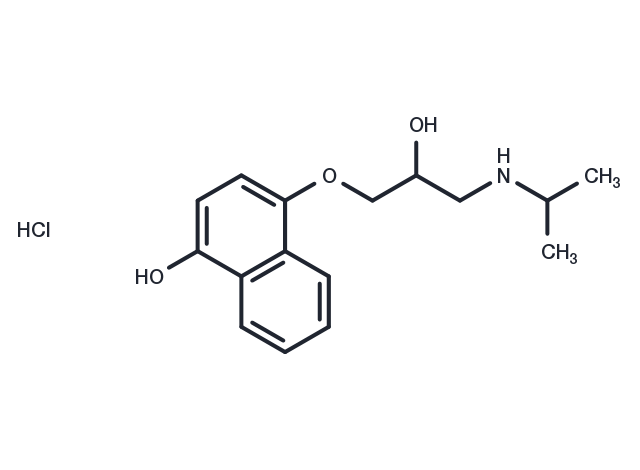Powder: -20°C for 3 years | In solvent: -80°C for 1 year


4-Hydroxypropranolol hydrochloride is an active metabolite of Propranolol, with a potency comparable to Propranolol. It inhibits β1- and β2-adrenergic receptors (pA2s: 8.24 and 8.26).

| Description | 4-Hydroxypropranolol hydrochloride is an active metabolite of Propranolol, with a potency comparable to Propranolol. It inhibits β1- and β2-adrenergic receptors (pA2s: 8.24 and 8.26). |
| Synonyms | (±)-4-hydroxy Propranolol hydrochloride |
| Molecular Weight | 311.8 |
| Formula | C16H22ClNO3 |
| CAS No. | 14133-90-5 |
Powder: -20°C for 3 years | In solvent: -80°C for 1 year
You can also refer to dose conversion for different animals. More
bottom
Please see Inhibitor Handling Instructions for more frequently ask questions. Topics include: how to prepare stock solutions, how to store products, and cautions on cell-based assays & animal experiments, etc.
4-Hydroxypropranolol hydrochloride 14133-90-5 Others 4-hydroxy Propranolol Hydrochloride 4Hydroxypropranolol hydrochloride 4-Hydroxypropranolol Hydrochloride 4 Hydroxypropranolol hydrochloride (±)-4-hydroxy Propranolol hydrochloride inhibitor inhibit
